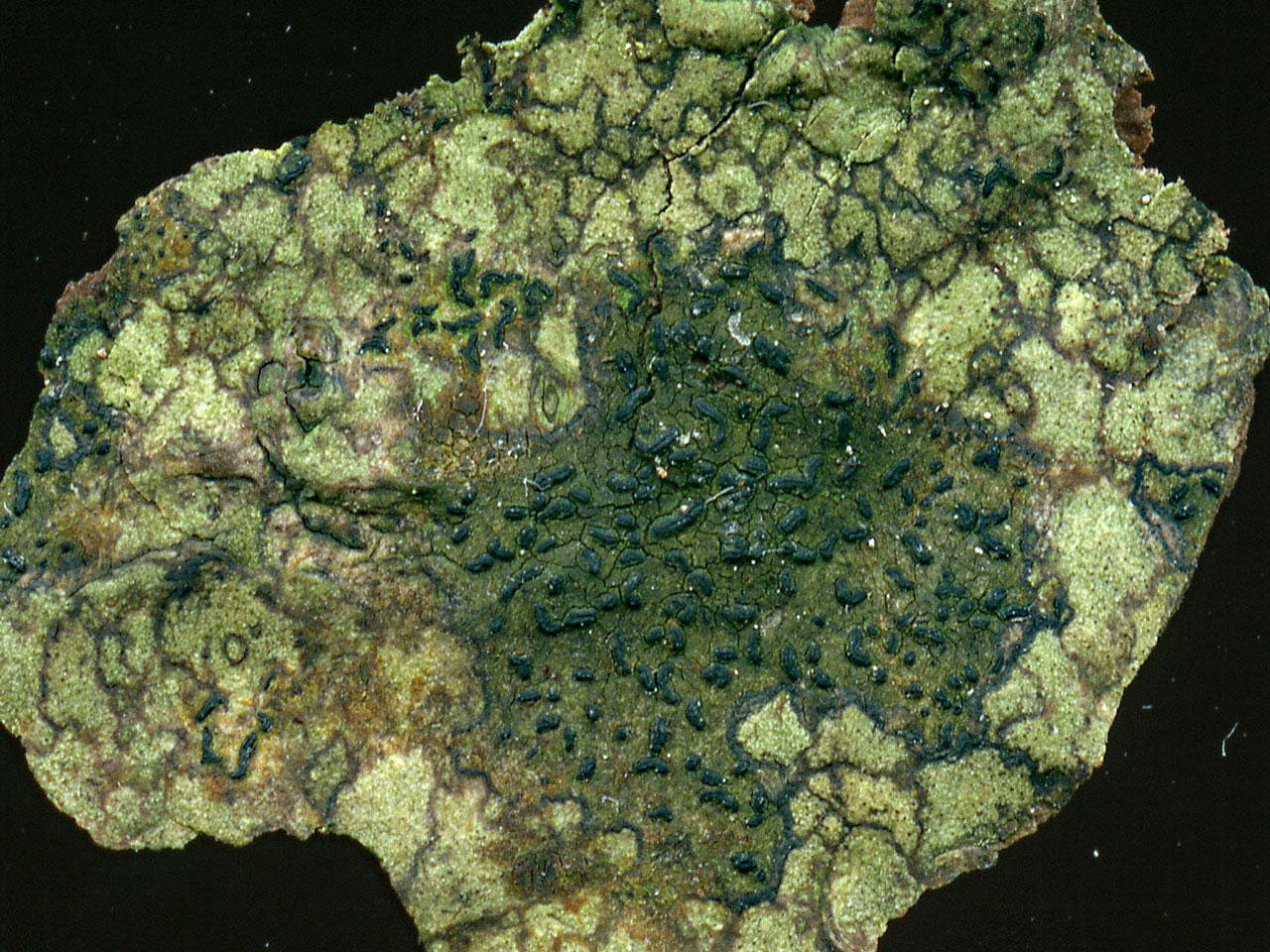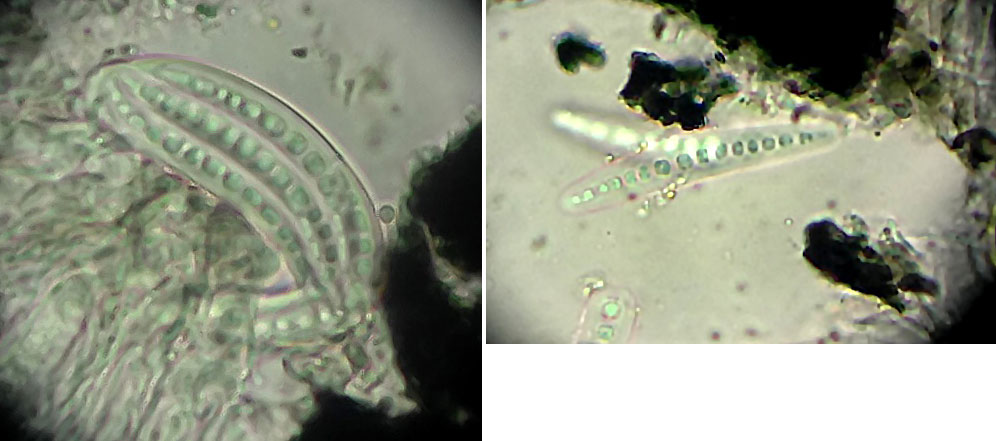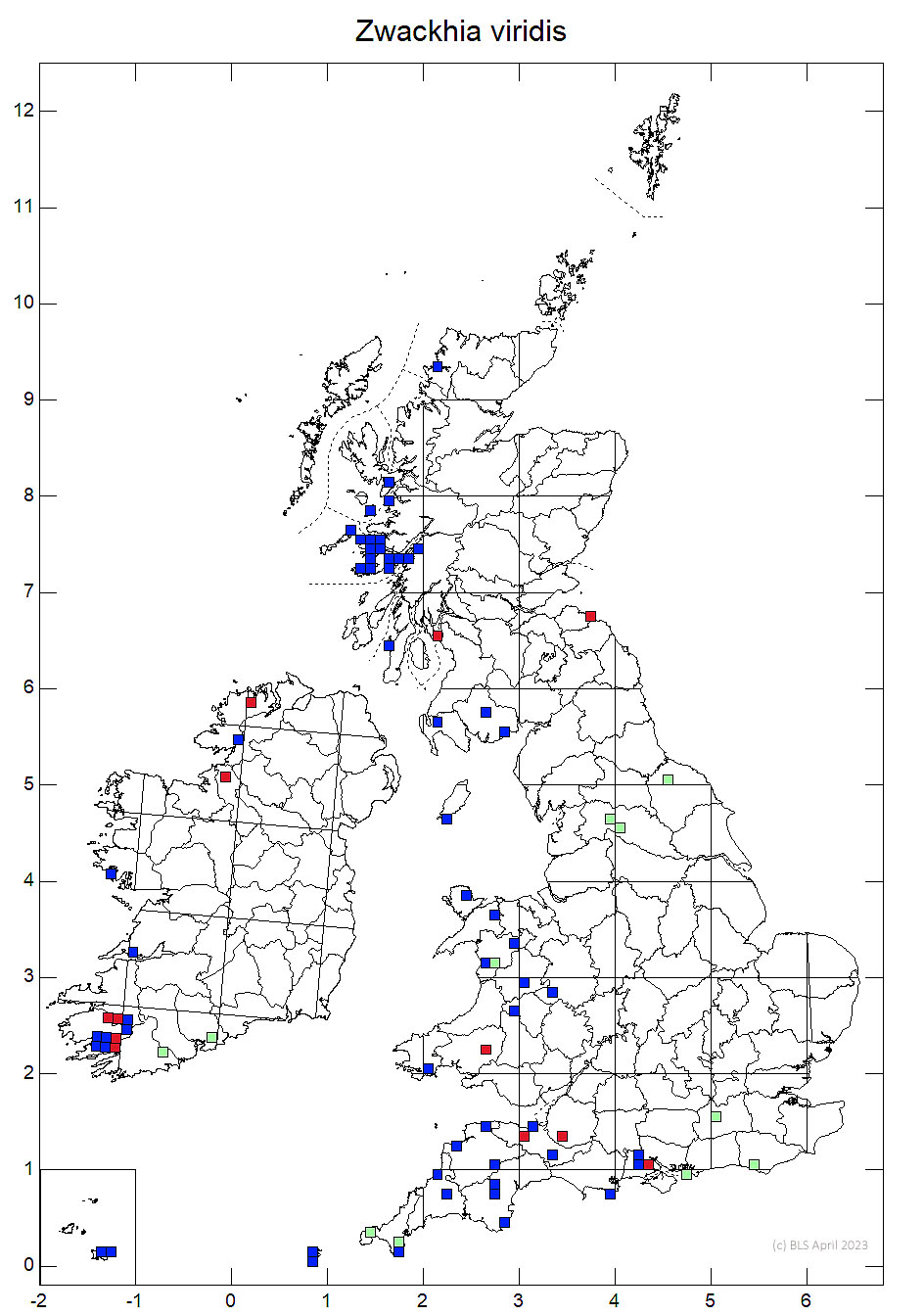The fertile counterpart of the widespread and normally sterile and sorediate Zwackhia sorediifera. Appears rare and potentailly confined to Beeches in the New Forest, but much confused with infrequent fertile thalli of Z. sorediifera. Potentail Z. viridis should allways be checked for residual soralia on the non-fertile edges of the thallus.
Thallus thin or inconspicuous, usually in small (2–4 cm) patches, smooth or somewhat scurfy, dull olive or brown, rarely pale. Apothecia 0.4–0.8 (–1.0) × 0.12–0.35 (–0.4) mm, 0.08–0.10 mm tall, sessile, initially semi- immersed, short, rounded, scattered, seldom shortly furcate, often elliptical or button-like; disc a narrow slit; exciple K+ olive green, reaction sometimes faint; epithecium pale; hymenium 70–80 μm tall, I+ red. Ascospores 23–60 × 6–9 μm, (8-) 11- to 15-septate, with a distinct gelatinous sheath. Conidia of two types: bacilliform 3.5– 6 × 0.5–1 μm or rod-shaped, slightly curved, 15–18 × ca 1 μm. Thallus C–, K–, KC–, Pd–, UV– (no lichen products detected by TLC).
Closely related to Zwackhia sorediifera, which has C+ orange-pink soralia. The non-fertile edges of the thallus should always be checked for residual soralia; small partial specimens from fertile sections of the thallus cannot be determined reliably between Z. viridis and Z. sorediifera.
Confirmed from flushed bark on ancient Beeches in the New Forest (Hampshire).

Confirmed from old Beeches in the New Forest (Hampshire), where rare. Records from elsewhere, and from smooth, usually young, shaded bark (particularly Sycamore, Hazel, Holly, Oak and Sallow) are probably errors for richly fertile, sparingly sorediate thalli of Z. sorediifera. Zwackhia sorediifera has a highly oceanic distribution in Europe, while Z. viridis is a widespread sub-oceanic species.
The status of this species is unclear, but if only found in the New Forest, it is probably a Red List species
Britain: Data Deficient
Cannon, P., Coppins, B., Ertz, D., Pentecost, A., Sanderson, N., Simkin, J. & Wolseley, P. (2021). Arthoniales: Lecanographaceae, including the genera Alyxoria, Lecanographa, Phacographa, Plectocarpon and Zwackhia. Revisions of British and Irish Lichens 14: 1-15.
Text by Neil A Sanderson, based on Cannon et al (2021)


